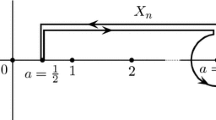
Access this book
Tax calculation will be finalised at checkout
Other ways to access
About this book
Similar content being viewed by others
Keywords
Table of contents (7 chapters)
Reviews
“This well-written book, complete with all proofs and a wealth of exercises, is perfectly suited as a text book for introductory courses.” (Wim Schikhof, zbMATH 0947.11035, 2022)
From the reviews:
MATHEMATICAL REVIEWS
"The text ends with a large number of exercises. The writing is extremely clear and very meticulous. The bibliography, which does not attempt to be comprehensive, is adequate. I recommend A. Robert’s book without reservation to anyone who wants to have a reference text on one-variable p-adic analysis that is clear, complete and pleasant to read."
MATHSCINET
"Robert's book is aimed at an intermediate level between the very specialized monographs and the elementary texts. It has no equal in the marketplace, because it covers practically all of p-adic analysis of one variable (except the rationality of the zeta function of an algebraic variety over a finite field and the theory of p-adic differential equations) and contains numerous results that were accessible only in articles or even in preprints. ...
I recommend A. Robert's book without reservation to anyone who wants to have a reference text on one-variable p-adic analysis that is clear, complete and pleasant to read."
D. Barsky in MathSciNet, August 2001
Authors and Affiliations
Bibliographic Information
Book Title: A Course in p-adic Analysis
Authors: Alain M. Robert
Series Title: Graduate Texts in Mathematics
DOI: https://doi.org/10.1007/978-1-4757-3254-2
Publisher: Springer New York, NY
-
eBook Packages: Springer Book Archive
Copyright Information: Springer Science+Business Media New York 2000
Hardcover ISBN: 978-0-387-98669-2Published: 31 May 2000
Softcover ISBN: 978-1-4419-3150-4Published: 19 November 2010
eBook ISBN: 978-1-4757-3254-2Published: 17 April 2013
Series ISSN: 0072-5285
Series E-ISSN: 2197-5612
Edition Number: 1
Number of Pages: XVI, 438
Topics: Number Theory



